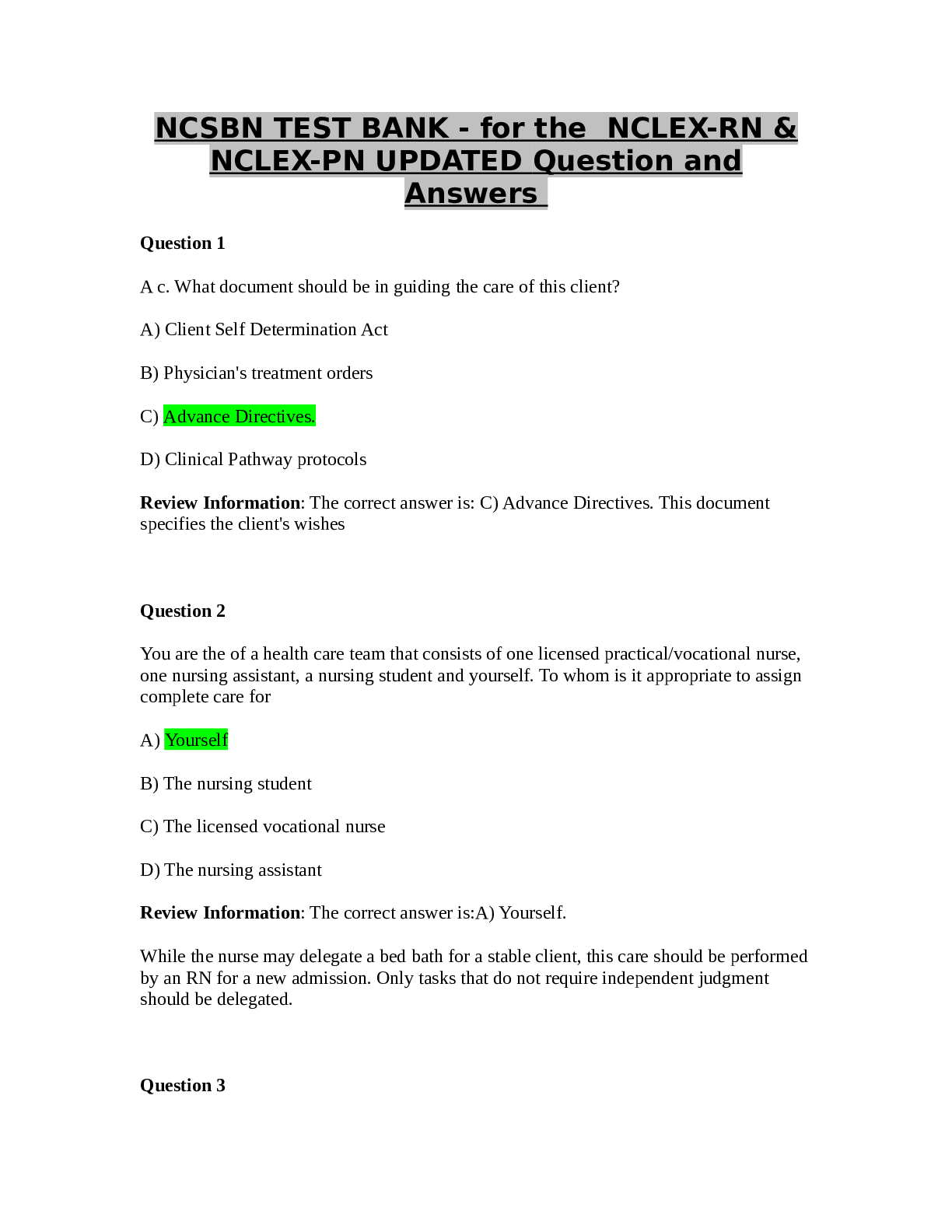English > QUESTIONS & ANSWERS > Miami Lakes Educational CenterLISH ENGEnglish3 (All)
Miami Lakes Educational CenterLISH ENGEnglish3
Document Content and Description Below
Name: 1. READ: As you read lines 1–21, begin to collect and cite text evidence. • Underline images that help you visualize the weather. • Highlight images of street life. • In the margin, ... describe the setting (lines 1–10). -The setting takes places in an area where a blizzard is going on, and it’s February around three o’clock in the afternoon. 2. REREAD: Reread lines 1-21. Describe the contrast between the storm outside and the people who remain inside. CITE evidence from the text -The difference between the storm outside and the people who remained inside is that the faces of the people outside were “tingled and burned as from a thousand needle-prickings” (line 3), and the people inside were warm. 3. READ: As you read lines 22–48, continue to cite textual evidence. • In the margin, explain what is on everyone’s mind. -The thought of “hot dinners” (line 22) is on everyone’s mind. Since there was a blizzard everybody wanted a hot meal so they can warm up. • Underline examples of people moving toward their destination. • Highlight descriptions of men waiting near the “charitable house.” 4. REREAD: Reread lines 30-42. How is the situation getting worse for the men? CITE textual evidence in your response. -The situation is getting worse for the men because the storm is causing them to have “red, inflamed wrists” (line 40) because they been out in the cold too long. 5. READ: As you read lines 49–102, continue to cite textual evidence. • Underline the descriptions of the “men of industry.” • In the margin, summarize the essential difference between the “men of industry” and the “Bowery lodging-house element.” -The difference between the “men of industry” and the “Bowery lodging-house element” is that the men of industry paid five cents for food and a bed, and the Bower lodging-house element was ten cents for the people. • Highlight the lines that describe the problem the men face, and explain the problem in the margin (lines 85–92). -The problem that the men faced was crying “out against to do anything but be crushed to pulp” (lines 91-92). This problem occurred because the men started pushing each other to get to the front of the door, and they didn’t care if you got crushed. 6. REREAD: Reread lines 79-102. How does the author’s use of dialect affect the story? -The author’s use of dialect affected the story in a good way. It allowed us to see what the men were saying while waiting to go inside the charitable house. 7. READ: As you read lines 103–142, continue to cite textual evidence. • Underline details that describe the conditions outside. • Highlight details that describe the man in the window across the street. • In the margin, explain the reactions of the men to the man in the dry goods store. -The men addressed the man in the dry goods store in “every manner” (line 128). Some greeted him by shouting and others were trying to give him advice on his appearance. 8. REREAD: Reread lines 125-130. In your own words, explain how the men show solidarity with one another. -The men showed solidarity with one another by talking and laughing about a figure in the window [Show More]
Last updated: 2 years ago
Preview 1 out of 8 pages

Buy this document to get the full access instantly
Instant Download Access after purchase
Buy NowInstant download
We Accept:

Reviews( 0 )
$7.50
Can't find what you want? Try our AI powered Search
Document information
Connected school, study & course
About the document
Uploaded On
Apr 27, 2021
Number of pages
8
Written in
Additional information
This document has been written for:
Uploaded
Apr 27, 2021
Downloads
0
Views
145


.png)

.png)
.png)
.png)


.png)




